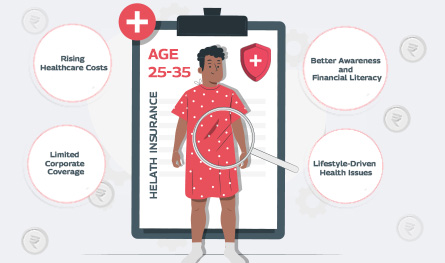How to save tax for salary above 10 Lakhs in India and pay zero tax?
.png)
Based on the income tax slab, every individual has to pay tax in India. However, there are measures that can be used to pay zero tax on salary. In this post, we will discuss how to save tax on 10 lakh income or above.
.png)
In India citizens are expected to pay tax as per the tax slab that they belong to. However, there are ways to get tax deductions to pay no tax or zero tax on your income by means of investment plans in various tax-saving instruments.
If you are looking for such ways to pay no tax on 10 lakh income and beyond, don’t miss out on optimization of salary. In this post, we are offering various tips on tax planning by means of salary optimization to guide you better. But before that let’s look at the income tax slabs under the new and old income tax regime.
Old Income Tax Regime vs. New Income Tax Regime (for tax slab):
Take a look at the new and old tax regimes for tax slabs so that you can choose the best one between the two. Here we are offering the various tax slabs under both the regimes for better understanding.
Income Tax Slabs for Individuals
| Yearly Income | Tax Slab As Per Old Tax Regime | Tax Slab As Per New Tax Regime |
| Up to INR 2.5 lakh | NIL | NIL |
| INR 2.5 lakh to INR 5 lakh | 5% | 5% |
| INR 5 lakh – INR 7.5 lakh | 20% + Rs. 12,500 | 10% + Rs.12,500 |
| INR 7.5 lakh – INR 10 lakh | 20% + Rs. 12,500 | 15% + Rs.37,500 |
| INR 10 lakh – INR 12.5 lakh | 30% + Rs 1,12,500 | 20% + Rs.75,000 |
| INR 12.5 lakh – INR 15 lakh | 30% + Rs 1,12,500 | 25% + Rs.1,25,000 |
| INR 15 lakh and above | 30% + Rs 1,12,500 | 30% + Rs.1,87,500 |
You may note here that the new tax regime does not provide any deductions. It is only the Old Tax Regime that allows deductions as discussed in the post below.
How to Save Tax for Salary above 10 lakhs?
If you want to know how to save tax on 10 lakh salary, you should first understand your Salary Structure to be able to save more. There are various grants and tax exemptions allowed under a salary. The taxable income is the amount of salary that doesn’t come under the purview of any exemptions.
Hence, your Salary minus Exemptions is equal to Taxable Salary Income. Similarly, Taxable Salary Income minus Deductions is equal to Net taxable income. Hence, tax savings can be capitalized on through various deductions and exemptions (available under the old tax regime).
Salary Exemptions Allowed under Income Tax
Various Salary Component that comes under Tax Exemptions include:
- Basic Salary
- Dearness Allowance
- HRA or House Rent Allowance
- LTA or Leave Travel Allowance
- Mobile/Internet Allowance
- Education allowance for Children
- Food Allowance
- Standard Deductions
- Professional Tax
Deductions that can be Availed on Income Tax on 10 lakh Salary
- On policy premium of your Health insurance (Under Section 80D)
- On loan for higher education (Under Section 80E)
- Charity Donations (Under Section 80G)
- Investments done in tools of tax saving (Under Section 80C)
- On disabled dependent treatment cost (Under Section 80DD)
- Deductions are available on home loan
- Also on the Life Insurance Policy maturity amount
Ways to Pay Zero Income Tax on 10 Lakh Salary and Above?
Let us understand income tax above 10 lakh with an example as follows:
| Salary (Gross) | INR 10, 00, 000 |
| Exemptions: (rough estimation) | |
| HRA | INR 1,50,000 |
| LTA | INR 40,000 |
| Reimbursements | INR 24,000 |
| Education (of children) | INR 9,600 |
| Standard Deductions | INR 50,000 |
| Professional Tax | INR 2,400 |
| Taxable Salary | INR 7,24,000 |
| Deductions: | |
| Under 80C | INR 1,50,000 |
| Under 80D | INR 50,000 |
| Under 80E | INR 25,000 |
| Income for Net Tax | INR 4,99,000 |
| Taxable Amount | INR 12, 450 |
| Rebate Under Section 87A | INR 12, 450 |
| Total Tax | 0 |
Also, you may be eligible for further deduction of claims for tax above 10 lakhs:
| Home loan deduction (Interest amount) Under section 24(b) | INR 2,00, 000 |
| Home loan under section 80EEA | INR 1,50, 000 |
| Savings in NPS Under section 80CCD(1B) | INR 50, 000 |
You may here note that it is not necessary for everyone to possess a home loan. Moreover, many people may not show interest in investments as well. However, these tax saving investments can be used to deduct INR 1, 50,000 from your salary under section 80C.
Save Tax For Salary Above 10 Lakh
To claim tax deductions u/s 80C, one can file income tax returns in March, which is the end of a financial year.
As per Income Tax Act, an income of INR 2.5 lakh is tax-free per year. However, for senior citizens of 80 years and above, INR 5 lakh is tax-free. And those within the age group of 60 and 79 years can enjoy tax exemption of INR 3 lakh.
No, as per Section 80C of Income Tax, INR 1.5 lakh is the highest amount that can be claimed for tax deduction regardless of how many investment policies you have. However, people belonging to Hindu Undivided Family (HUF) can avail benefits of INR 1.5 lakh under section 80C individually as well as INR 1.5 lakh benefit is allowed for the Hindu Undivided Family (as a unit).
Yes, saving 100 percent on tax is possible with the help of enough investments and planning of tax.
Yes, one can invest in post office schemes to save income tax u/s 80C of IT Act.

Author Bio
Paybima Team
Paybima is an Indian insurance aggregator on a mission to make insurance simple for people. Paybima is the Digital arm of the already established and trusted Mahindra Insurance Brokers Ltd., a reputed name in the insurance broking industry with 17 years of experience. Paybima promises you the easy-to-access online platform to buy insurance policies, and also extend their unrelented assistance with all your policy related queries and services.
Other Life Insurance Products
Latest Post
.png)
When you're planning to take a personal loan, knowing your monthly EMI in advance can help you stay financially prepared. The Muthoot Personal Loan EMI Calculator is a simple and efficient tool that provides instant EMI estimates based on your loan amount, interest rate, and tenure.


Relocating your two-wheeler to a different state needs to follow many procedures. Depending on the duration for which you are moving to the new place, it becomes necessary to transfer your vehicle papers if it is for more than a year. Although tedious, the process of relocating vehicles can become easy if you follow certain tips mentioned in this post. Read on!


In what’s being called a quiet healthcare revolution, India’s young working professionals are reportedly making the most health insurance claims – outpacing even senior citizens. Surprised? So are the insurance providers. Young adults ranging between 25 and 35 years, who are often assumed to be in peak health, are now dominating the charts in health insurance claims by age.


If you think lifestyle-related health issues only show up after 40, think again. Youth no longer guarantees immunity. Today’s 25 - 35 age group is increasingly facing medical issues that only plague older adults. The reason? Long working hours at the desk, deliveries on speed dial, and a social life that rarely includes a decent amount of sleep are some of the reasons for the early onset of medical conditions like diabetes, anxiety, and hypertension.


.png)
